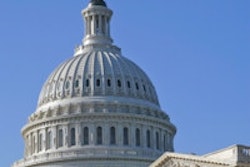
The ADA and its state chapters have become major political players by spending $39 million since 1999 to influence U.S. lawmakers and legislation, according to the National Institute on Money in State Politics, a nonpartisan campaign-research group.
Among other things, the lobbying efforts aided the ADA's successful fight to twice defeat a component of the healthcare reform law that would have funded midlevel provider (MLP) demonstration projects.
The spike in ADA spending on lobbying efforts took a noticeable jump in 2008 when healthcare reform became a major topic of discussion in the presidential primary campaigns, according to the nonpartisan Center for Responsive Politics (CRP). From1998 to 2007, the ADA never spent more than $500,000 annually on lobbying.
In fact, the ADA's donations to candidates have earned it a ranking of 48 on a list of 100 Top All-Time Donors from 1989 to 2012, according to the CRP.
This year the ADA and its 157,000 members are on track to again dole out millions in federal and state contributions. The ADA and its affiliates have already spent nearly $2 million in campaign contributions, according to the National Institute on Money in State Politics. Most of the money went to Republican candidates (61%), according to the CRP.
Mary Jennings, DDS, editor of the Washington State Dental Association News, described the rationale for ADA lobbying in a recent opinion piece. "Advocacy is how we keep well-intentioned fools from doing stupid things to, and with, our profession," she wrote. "We have our 'Dogs of War'-- our grassroots advocates. I am one and you should be, too."
To help advocacy efforts on the state level, in 2005 the ADA formed the State Public Affairs Program in 2005; last fall, the ADA's House of Delegates approved $3.5 million in funding for the program, according to Dr. Jennings.
Largest single healthcare PAC
The ADA's political spending has even caught the attention of the mainstream media. On June 22, the Wall Street Journal (WSJ) ran a story and related video describing how the dental community has become a major political player in the U.S., primarily through the ADA's political action committee (ADPAC).
ADPAC was the largest single healthcare PAC in 2008, outspending even the American Medical Association, according to the CRP. The money was used in part to protect dentists' turf and eliminate competition on issues ranging from MLPs to keeping teeth whitening under their sole purview, according to the WSJ.
But in a statement released June 25 in response to the WSJ article, the ADA noted that it has long maintained an office in Washington, DC, "to better advocate on behalf of the nation's oral health and the dental profession's ability to serve the public."
With the support of professional staff, ADA volunteer leaders work to ensure that Congress and the federal agencies understand the importance of oral health to overall health and well-being, and that the laws and rules they make and enforce help to improve the nation's oral health, the ADA noted.
"By contributing to ADPAC, ADA members work to elect and re-elect candidates who share the association's goal of breaking down the barriers that impede too many Americans from attaining good oral health," the ADA added.
According to the association, its lobbying and campaign activity helps support the following:
- Safety net programs to help underserved people get the care they need
- Prevention measures such as community water fluoridation, oral health education and dental sealant programs
- The National Institute of Dental and Craniofacial Research and other oral health research entities
- The military dental infrastructure that provides care to millions of service members and their families
- The dental components of the U.S. Public Health Service, the Centers for Disease Control and Prevention, and the Indian Health Service
- Law- and rule-making that prevents unnecessary increases in the cost of dental care



















